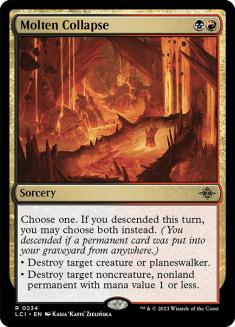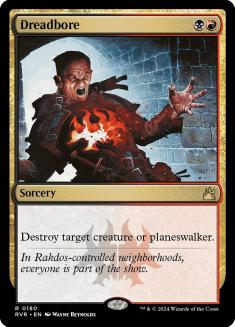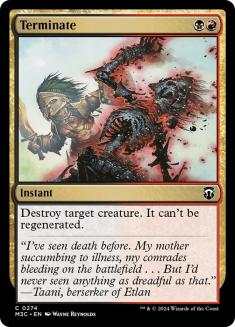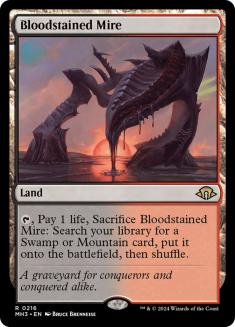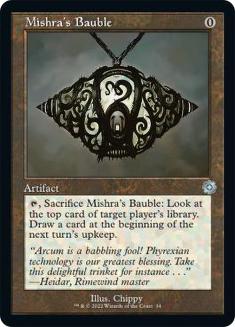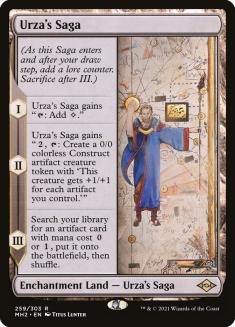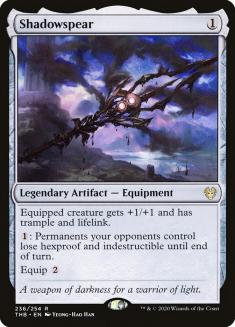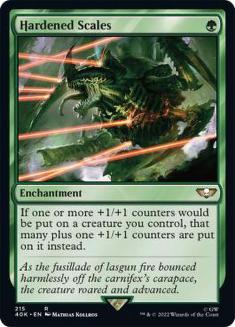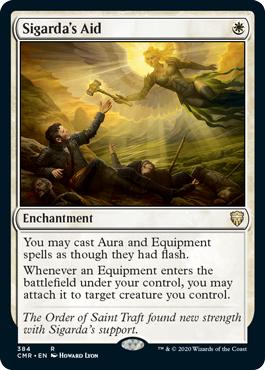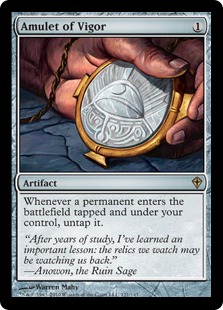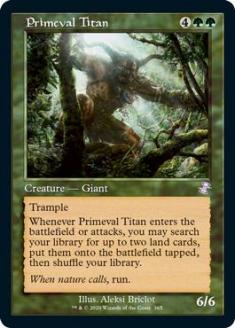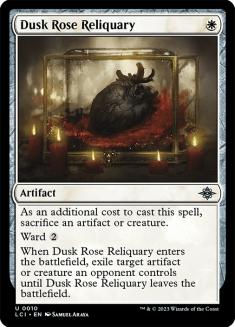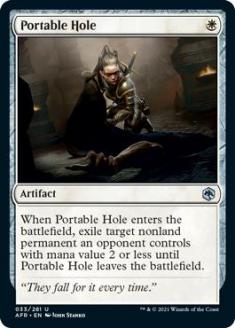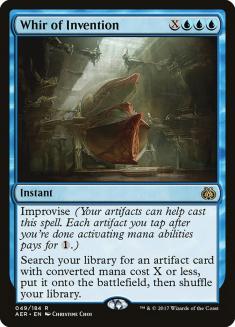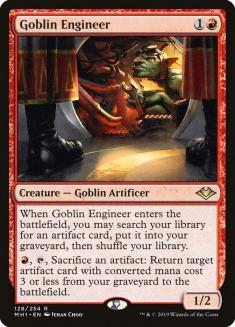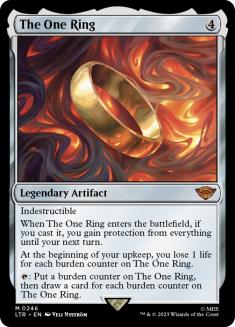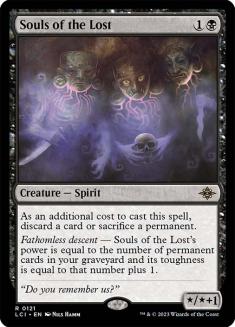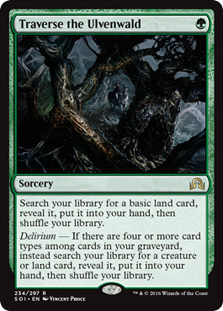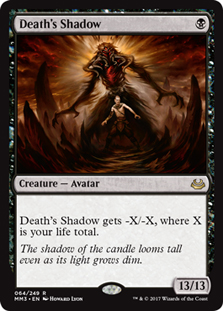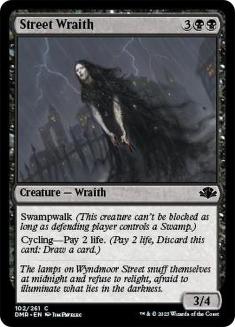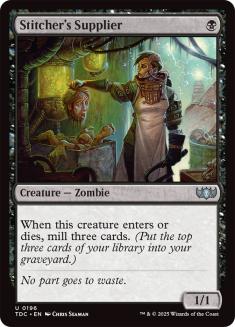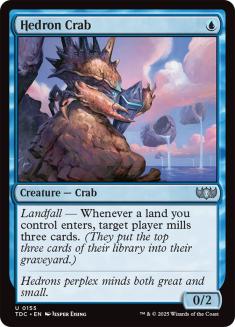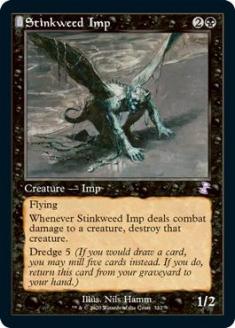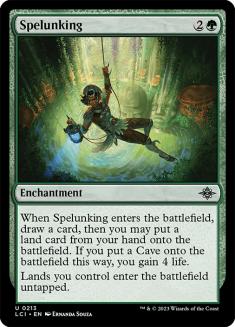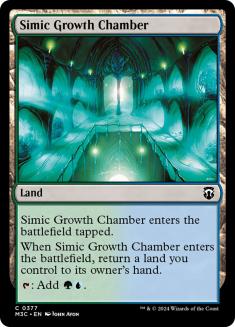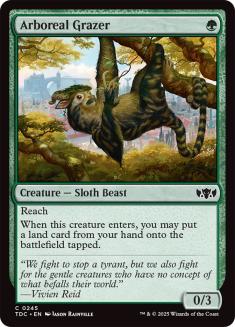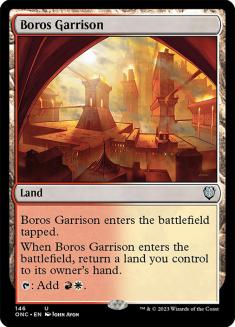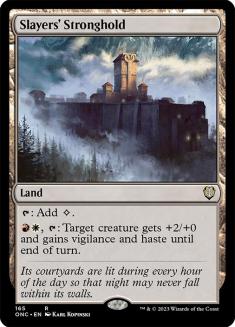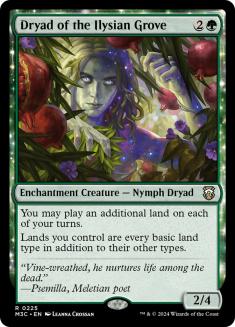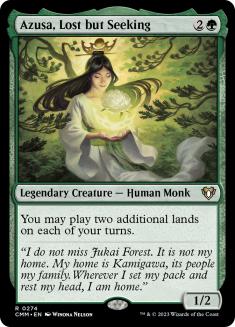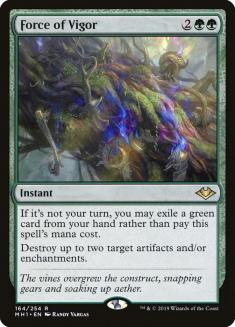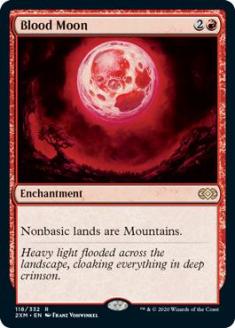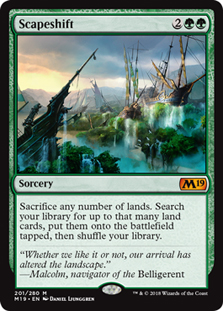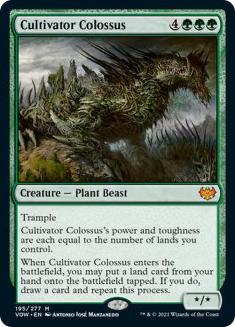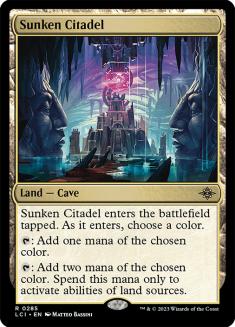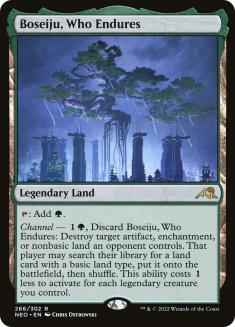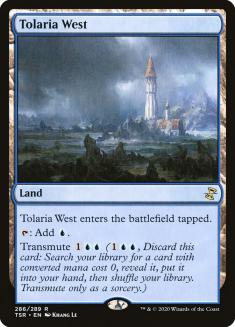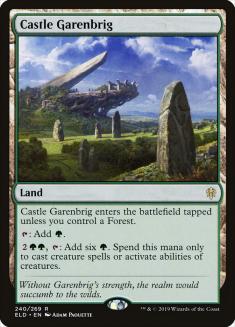The Lost Caverns of Ixalan is a deep and rich set for Constructed. It will surely have the big impact on Standard that you hope any new set will have, but I could fill several more articles looking at the cards with Pioneer potential. If you like building Cubes of any kind, this set has a lot of treasure for you.
Its impact on Modern is less clear. The tricky combo cards that tickle my fancy for Pioneer and the trinkets you can build around in smaller, less ruthless formats get a hostile reception in Modern. With all the complaints about the current state of the format, it’s hard to get too excited about anything – that flashy new card will just get swept up by Fury or snatched away by Grief.
Let’s start with a card that may make the Rakdos Evoke menace even stronger.
Molten Collapse
Dreadbore is a rare sight in Modern, with Rakdos Evoke and the few other decks that could play it opting for the immediacy of Terminate instead. Even though Wrenn and Six has fallen on hard times, there are enough planeswalkers worth removing in Modern that this choice tells you something important about the format.
The descend condition on Molten Collapse is trivial in the fetchland format, even without other freebies like Mishra’s Bauble (or Grief and Fury!). You will get the upgrade on Molten Collapse when you want it – but is that enough to swing your vote?
Urza’s Saga is a constant thorn in the side of Rakdos Evoke, especially as the default answer in Blood Moon has been edged out of the maindeck. Saga is a self-contained win condition that dodges Grief or Thoughtseize and requires several removal spells or a well-timed Fury to clean up. The third chapter offers this protected access to some powerful one-drop. This can include key combo pieces like Amulet of Vigor or Colossus Hammer, but the safe and fair choice of Shadowspear is still a big problem. A pair of Constructs backed up by Shadowspear can win a race against most Evoke draws with no further support.
Molten Collapse trades with one Construct but also blunts the Shadowspear that makes anything else a threat while shrinking the remaining Construct. That’s only two-thirds of the Saga’s output – but that’s more than most removal can claim.
The most prominent Saga decks also have cheap enchantment enablers that you desperately need to remove. You can’t Thoughtseize or Grief a Hardened Scales on the draw, and a Rakdos deck can’t normally remove it once it’s on the battlefield – Molten Collapse is a welcome exception. A two-for-one that’s a unique answer to big problems sounds perfect, especially with the rise in Hardened Scales as an apparent nemesis for Rakdos Evoke.
The problem is that it’s not clear what you want to hit with the other mode. Dreadbore is embarrassing against Hardened Scales and Mono-White Hammer, where you need your removal to be instant-speed and efficient. You can’t wait on Molten Collapse to get two cards, as these decks are built to punish that greed, but you can’t rely on them exposing a good removal target early. That Puresteel Paladin will get to work right away – by the time you can Collapse it, its job is done.
That goes for the enablers too, though! If they aren’t under pressure, they can hold the critical Sigarda’s Aid or The Ozolith until their big turn. You have discard spells to punish them for holding back, but you can’t warp how you play the game just to chase the dream with Molten Collapse.
How about another scary Saga deck? Molten Collapse is a maindeck-worthy way to answer the almighty Amulet of Vigor, and you’ll gladly take down a Dryad of the Ilysian Grove too. However, from the Amulet side, I’m relieved if Rakdos replaces its only universal, instant-speed removal in Terminate with Molten Collapse, even if it puts more pressure on Amulet itself. If I get a turn with an uncontested Primeval Titan or can pair a Dryad with Valakut, the Molten Pinnacle, you might not get another turn where you can use your slow removal spell.
Dusk Rose Reliquary
Dusk Rose Reliquary is a much narrower addition to the long list of removal in Modern, but I have a specific use in mind.
Years ago, when Portable Hole was our first taste of the ill-fated Adventures in the Forgotten Realms, I flagged it as a possible game-changer for any ambitious artifact decks. I followed that up with a strong Modern Challenge performance with Azorius Whirza, and there were a few Thopter Foundry sightings here and there, but not the full-scale revival I had hoped for.
Dusk Rose Reliquary isn’t a direct upgrade to Portable Hole – especially when you have to hit that Hardened Scales or Sigarda’s Aid yourself – but it’s an important pickup for the tutors that tie these decks together.
Portable Hole turns Whir of Invention into a removal spell, but the biggest threat often has a higher sticker price (such as a Grief or Fury that has stuck around since Turn 1 somehow). With Dusk Rose Reliquary, a Whir for X = 1 is finally a direct removal spell that also makes the opponent pay more to unlock their threat.
Reliquary also answers bigger artifacts like The One Ring, itself a big deal for Whir as a strong card advantage engine you can find to pull ahead without needing some specific combo piece already. I’m glad to put the cork back in Bottled Cloister once and for all…
Souls of the Lost
Souls of the Lost teases you with its similarities to Tarmogoyf, but that one isn’t an apex predator anymore. It asks for more than Tarmogoyf and has fewer natural homes, but the ceiling is much higher, and you have to unlock that upside for Souls to compete in a format that has moved past Tarmogoyf.
Both cards benefit from the same familiar trends:
The usual suspects are perfect for the pass/fail condition on the “if you descended” cards like Molten Collapse, but are also the obvious starting point for chasing the “Descend N” condition or the endless scaling on Fathomless Descent. You could take many existing decks that don’t intend to support Souls of the Lost and expect it to be a strong threat there anyway with minimal changes (a few extra fetchlands, perhaps).
The first wave of Death’s Shadow decks had seemingly similar incentives thanks to Traverse the Ulvenwald and good old Tarmogoyf, but the need for a variety of card types meant that you couldn’t focus too much on any single one. The first fetchland is on the house, but the second doesn’t help. Fathomless descent doesn’t care how or why those cards are there, just that they are.
It’s tempting to build a similar shell around these eight ‘Tarmogoyfs’, as these decks always wanted additional threats, but this shell tries to force both players into a low-resource game where its efficiency and cheap threats give it the edge, and so it will rarely have a spare card or permanent to throw away.
Modern is full of ways to turn those additional costs into upsides.
Creatures (34)
- 4 Carrion Feeder
- 1 Wonder
- 4 Hedron Crab
- 4 Vengevine
- 3 Gravecrawler
- 4 Stitcher's Supplier
- 4 Merfolk Secretkeeper
- 4 Grief
- 2 Undead Butler
- 4 Souls of the Lost
Lands (20)
Spells (6)

We all spent too long watching Hedron Crab and friends wreak havoc with villains like Hogaak, Arisen Necropolis and Golgari Grave-Troll, helping them earn their rightful life sentences on the Banned List. It’s trivial to knock a large chunk of your deck into your graveyard in the first few turns, making Souls of the Lost alarmingly large very quickly. These graveyard combo decks can struggle to balance their enablers with their payoffs, but Souls of the Lost can be both at once, dumping Stinkweed Imp where it belongs or even giving you a much-needed additional sacrifice outlet for Stitcher’s Supplier.
Or how about a truly cursed twist on Modern’s current menace?
Creatures (34)
- 4 Carrion Feeder
- 4 Flamekin Harbinger
- 1 Fulminator Mage
- 4 Vengevine
- 4 Stitcher's Supplier
- 4 Seasoned Pyromancer
- 1 Lightning Skelemental
- 4 Grief
- 4 Fury
- 4 Souls of the Lost
Lands (20)
Spells (6)
Sideboard

This Rakdos Elementals list tries to use Fury and Grief in many offensive ways at once. Aside from the much-maligned combo with Not Dead After All and Feign Death, Fury here can be a ‘free’ second creature to trigger Vengevine (as early as Turn 1 if you hit the jackpot on Stitcher’s Supplier!) that might boost Carrion Feeder or Souls of the Lost as a bonus, and even act as a strange sacrifice outlet for Stitcher’s Supplier.
Flamekin Harbinger finds Vengevine and is a cheap creature to bring it back, gets the Fury or Grief to pair with Not Dead After All, and offers access to situational Elementals like Lightning Skelemental in races, Fulminator Mage against big mana decks, or Ingot Chewer and Wispmare against anyone relying on artifacts and enchantments (whether to further their own plan or disable yours).
Spelunking
If you’re primarily a Limited player, Spelunking looks like just one more enabler for a rather adventurous Draft archetype. If you’re a Modern main who feels their heart sink when they face Turn 1 Amulet of Vigor, alarm bells might go off instead.
In Amulet Titan, there’s a big difference between starting the game with this effect and casting it later in the slot on the curve occupied by Dryad of the Ilysian Grove or Azusa, Lost but Seeking. Turn 1 Amulet of Vigor opens up some of the most absurd draws in Modern; Turn 3 Spelunking does not.
If one Amulet is scary, double Amulet is terrifying. Each additional Amulet raises the roof on your mana generation with a bounceland and opens up new lines with your utility lands. Urza’s Saga and The Mycosynth Gardens make these double Amulet draws more common than ever, and it’s now reasonable to make other card choices with that in mind.
Extra copies of Spelunking don’t stack up in this way, either with themselves or with Amulet. Spelunking can do a fine impression of the first Amulet, but never the second – and, if you have two Amulets already, Spelunking might get in the way!
The rules here aren’t intuitive. “Simic Growth Chamber enters the battlefield tapped” and “Lands you control enter the battlefield untapped” (on Spelunking) are both replacement effects, so you choose which applies – so, if you control two Amulets, you can choose to have it enter tapped as normal and override Spelunking to trigger both Amulets and gain more mana. However, a land that normally enters untapped being put onto the battlefield tapped via Arboreal Grazer or Primeval Titan is not technically a replacement effect, so you won’t get this choice and the land will always enter untapped (thanks, Spelunking…)
This imposes some odd limits. If Titan finds the common pair of Boros Garrison and Slayers’ Stronghold, the Garrison can enter tapped (and thus untap twice) but Stronghold cannot, preventing you from activating it twice and capping how much damage Titan can do right away.
Despite all that, I think Spelunking is a game-changer for Amulet Titan. Having that first Amulet effect is still crucial – you would happily trade in the possibility of double Amulet draws for a guarantee of a single Amulet – and you still need ramp spells to pair with it to get its full benefit. Explore is a fine ramp spell for the deck, and Spelunking offers an Explore stapled to the deck’s namesake!
As with any ramp deck, Amulet Titan needs a certain density of ramp spells to do its thing – but, unlike conventional ramp like Search for Tomorrow or Farseek that powers Titanshift, there are diminishing returns to these additional land drop effects without the lands to pair with them or the Amulet effect to reward you for that. Explore mitigates that by giving you a card back but is the least explosive of the mainstream options.
Spelunking offers the best of both worlds – the unique effect that sets up those explosive turns and a consistent form of ramp.
There are more ways to remove an Amulet in Game 1 than ever before, and both Amulet of Vigor and Urza’s Saga have gigantic targets on them post-sideboard. Spelunking is another way to unlock Amulet’s play patterns without the risk and commitment that can come with it. If an opponent wants to spend mana or cards removing a Spelunking that already replaced itself, fine!
Reliable ‘Amulet’ access changes the context for other cards too. Scapeshift is incredible with Amulet on the battlefield but uninspiring without – Spelunking might be the card that pushes it over the line. A copy of Cultivator Colossus usually appears in maindecks as another combo payoff, but it becomes much worse post-sideboard when your resources are under attack and your precious Amulet is more fragile. A big Colossus chain offers a unique thrill, and that may happen more often now.
Once you come around to Spelunking, you do a cursory check for playable Caves and come across some hidden treasure:
Spelunking synergy aside, Sunken Citadel is an intriguing option for a deck that already has far too many appealing lands – many of which work well with Citadel.
Sunken Citadel makes it easier to hold up mana for Boseiju, Who Endures or Urza’s Saga while making other relevant plays. It’s also an odd but welcome form of fixing for Tolaria West, which is tough to transmute in a mostly mono-green deck.
The real prize is Castle Garenbrig, which promises its own discount for Primeval Titan. With Citadel and Castle, you only need two more mana to get to that vital six-mana threshold, and the deck has many ways to make that jump (maybe even another copy of Citadel).
This spread of Modern candidates in a Standard-legal set is heartening. While it may be harder for The Lost Caverns of Ixalan to fill out a Top 5 list for Modern than for other formats, the cards in contention are likely to stick around for the long haul.


